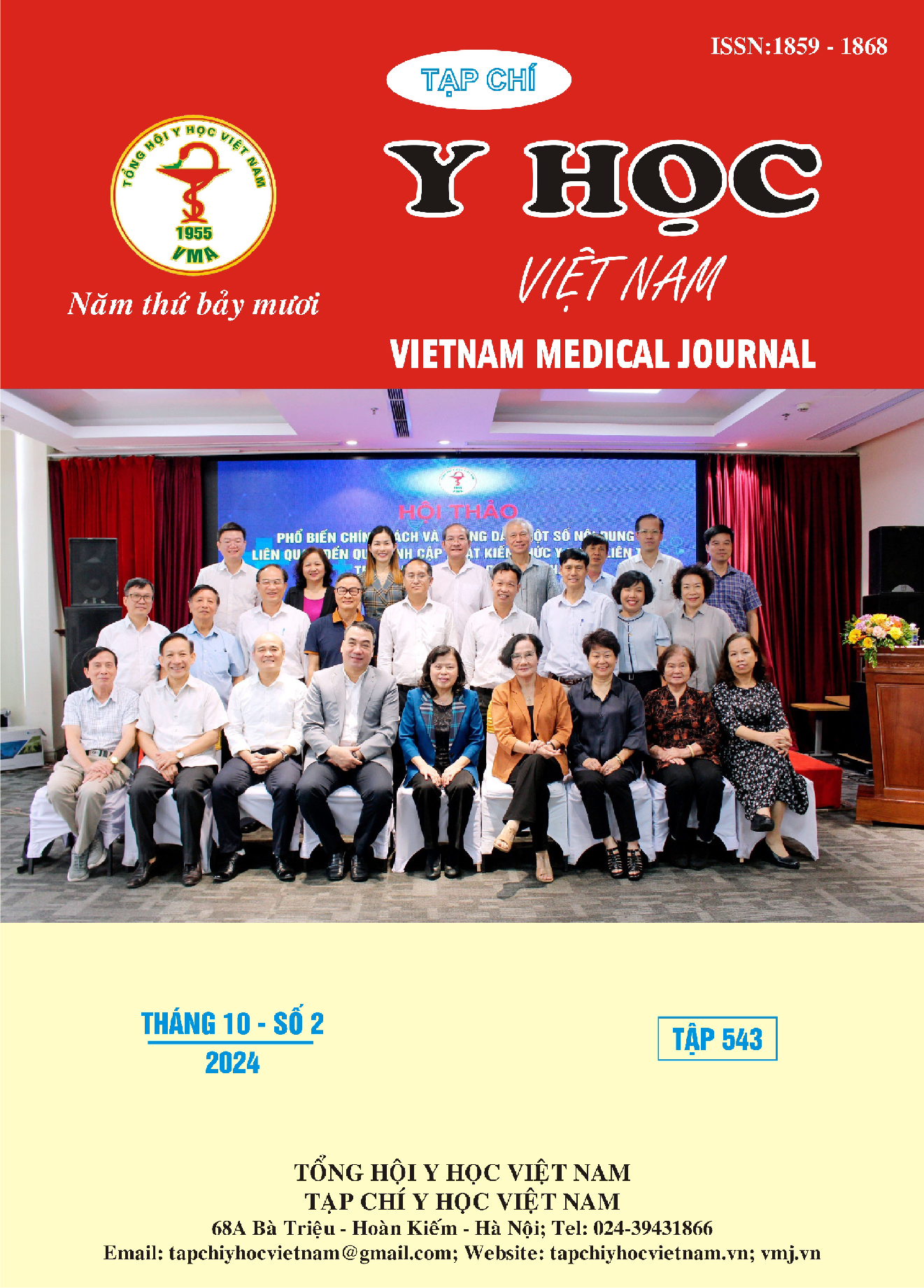SURVEY ON CHARACTERISTICS OF FINGER VENULES ACCORDING TO TRADITIONAL MEDICINE IN PEDIATRIC PATIENTS WITH RESPIRATORY INFECTIONS FROM 2 MONTHS TO 5 YEARS OLD AT LE VAN THINH HOSPITAL
Main Article Content
Abstract
Objectives: Finger venules is a diagnostic method based on observing the blood vessels in the index finger of children. It has clinical value when performed on children under 3 years old. The study aims to survey the characteristics of finger venules according to traditional medicine in pediatric patients with respiratory infections from 2 months to 5 years old, serving as a foundation for education, application, and future scientific research. Methods: Cross-sectional descriptive study conducted from March 2024 to June 2024 on 384 pediatric patients with respiratory infections at the Pediatrics Department of Le Van Thinh Hospital, Thu Duc City, whose parents (mothers) agreed to participate in the study. The characteristics of pulse diagnosis were surveyed based on the Traditional Medicine Diagnosis curriculum of the University of Medicine and Pharmacy, Ho Chi Minh City, in the fingerprint section. Results: Through the survey of 384 pediatric patients with respiratory infections, it was recorded that 174 children under 3 years old accounting for 45.31%. Among these, fengguan accounted for the majority at 26.04%, qiguan accounted for 19.01%, and mingguan was the least common at 0.26%. Conclusion: The level of finger venules had correlations with gender, age group, respiratory infections, and IMCI classification according to modern medicine.
Article Details
Keywords
Respiratory infection, IMCI, Finger venules.
References
2. Zhou Weihua (2012). The Correlation Study between Pneumonia Fingerprint Image and Evolution of Traditional Chinese Medical Syndrome in Children - CNKI. Shandong University of Traditional Chinese Medicine, MA thesis. Published 2012. Accessed June 13, 2024.
3. Trịnh Thị Diệu Thường, Nguyễn Thái Linh (2021). Chẩn đoán Y học cổ truyền. Nhà xuất bản Y học Tp Hồ Chí Minh, tr.226-227.
4. Phạm Ngọc Toàn và Lã Bích Hồng (2021). Một số yếu tố liên quan đến kết quả điều trị NKHHCT tại khoa khám và điều trị 24 giờ, bệnh viện nhi trung ương. Tạp Chí Y học Việt Nam, 506(2), tr.64.
5. Hoàng Văn Thìn và Đàm Thị Tuyết (2012). Thực trạng NKHHCT ở trẻ dưới 5 tuổi tại 2 xã huyện Hiệp Hoà, tỉnh Bắc Giang. Tạp chí Khoa học và Công nghệ, 111(11), tr.3-9.
6. Trần Duy Vĩnh (2020). Mô hình bệnh tật trẻ em tại khoa Nhi Bệnh viện Trung ương Huế cơ sở 2 trong 3 năm (2017-2019). Tạp chí y học lâm sàng số 59.
7. Yue Lu, Wei Benzheng, & Wang Xinjun (2010). A study on the clinical classification model for the hand venule of baby pneumonia based on decision tree algorithm. International Conference on Computer Application and System Modeling (ICCASM 2010), doi: 10.1109/ iccasm. 2010.5619318.
8. Trần Văn Hoà (2012). Nghiên cứu giá trị của phương pháp nhìn hệ tĩnh mạch ngón tay trỏ của YHCT để chẩn đoán mức độ NKHHCT ở trẻ em từ sơ sinh đến 3 tuổi. Đại học Y Dược Huế.


